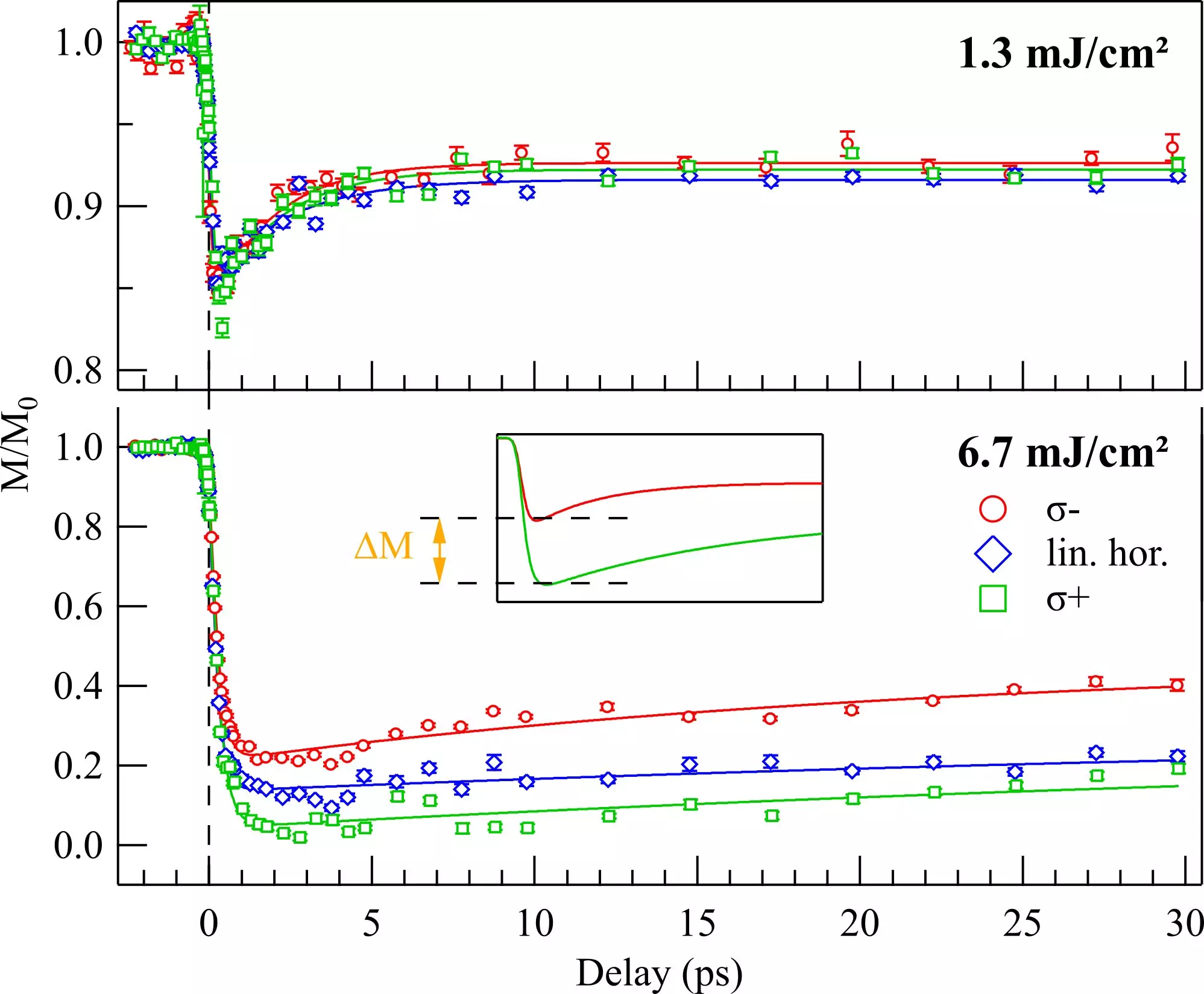Traditionally, intense laser pulses have been used to manipulate the magnetization orientation of materials by inducing thermal effects. The absorbed laser energy rapidly heats up the material, causing a perturbation of the magnetic order. This process typically involves the excitation of electrons, leading to changes in electron spin and orbital moments, and ultimately affecting long-range magnetization. However, while these thermal mechanisms have led to fascinating phenomena such as ultrafast demagnetization and magnetization switching, they also come with a drawback – a significant heat load on the material.
A recent study by scientists from the Max Born Institute (MBI) and an international team of researchers has introduced a breakthrough non-thermal approach to generating large magnetization changes using laser pulses. By exposing a ferrimagnetic iron-gadolinium alloy to circularly polarized extreme ultraviolet (XUV) radiation, the researchers were able to trigger a strong magnetic response based on the handedness of the incoming light burst. This non-thermal method relies on the inverse Faraday effect, which involves a direct interaction between the polarization of the light and the magnetic moments in the material.
The inverse Faraday effect (IFE) is at the heart of this non-thermal magnetization manipulation technique. Unlike traditional thermal effects, IFE does not rely on electronic heating induced by light absorption. Instead, it results in the generation of magnetic moments in a medium optically excited by circularly polarized radiation. The direction of magnetization is determined by the helicity of the circular polarization, making it a powerful tool for coherent magnetization control.
One of the challenges in utilizing non-thermal effects for magnetization manipulation is the absorptive properties of most ferro- and antiferromagnetic materials, which tend to suppress such effects. To overcome this limitation, the researchers developed a special technique using circularly polarized femtosecond pulses of XUV radiation. By generating the XUV radiation at the free-electron laser FERMI, they were able to achieve a significant IFE-induced magnetization in a metallic, ferrimagnetic iron-gadolinium alloy.
Through their experiments, the scientists demonstrated that the IFE-induced magnetization could reach up to 20-30% of the ground-state magnetization of the alloy. This significant non-thermal effect was measured by observing the ultrafast demagnetization induced for opposite helicities of the circularly polarized XUV pulses. Supported by ab initio theory and spin dynamics simulations, the researchers confirmed that the observed effects were consistent with the expected IFE response and not explainable by purely thermal mechanisms.
The findings from this study have opened up new possibilities for the non-thermal generation of large magnetization changes on ultrafast time scales. These results are expected to have a profound impact on the fields of ultrafast magnetism, spintronics, coherent magnetization control, and the science of nonlinear X-ray matter interactions. By harnessing the power of non-thermal magnetization manipulation through laser pulses, researchers are paving the way for exciting advancements in magnetic materials research and technology.


Leave a Reply